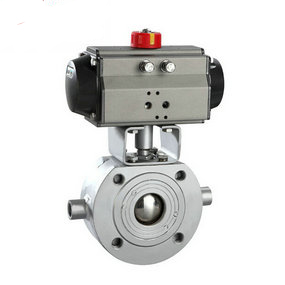Overview of pneumatic ball valve

The main function of pneumatic ball valve is to cut off or connect the fluid channel in the pipeline. The working principle of pneumatic ball valve is to apply a certain torque on the upper end of the valve stem to the ball with the help of the drive device, so as to complete the opening or closing action of the valve. The sealing principle of the valve seat of pneumatic ball valve varies with its structure. The commonly used valve seat structure can be divided into two types: fixed seat floating ball and floating seat fixed ball. When the fixed ball of the valve seat floats, the ball moves along the direction of fluid flow under the action of fluid, making it seal and tighten with the valve seat behind the valve, that is, the specific pressure on the sealing surface increases, forming a unilateral seal. At the same time, the specific pressure on the sealing surface of the valve seat before the valve is correspondingly reduced, which usually cannot guarantee the sealing. When the floating ball of the valve seat is fixed, the fluid pressure will not cause the ball to shift, but the valve seat will press against the ball through the spring or fluid thrust to establish the sealing specific pressure.

